
UNTITLED
1996—
Ink on paper
12 in. x 16 in. x 56 ft.
Collection of Rene & Veronica di Rosa Foundation, Napa, CA and
Berkeley Art Museum, Berkeley, CA



SELF-PORTRAIT
1997—
Steel, ink on paper
4 in. x 88 in. x 20 ft.
Extended Loan to Ballett Frankfurt, Frankfurt, Germany


Shipping crate used for transport to Frankfurt:

CLARION ALLEY VACATION
1997—
Thermoplastic text on asphalt;
City of San Francisco, "Public Street Vacation";
Street art performance as "text-based conceptual artist"
6 ft. 2 in. x 175 lbs. x 365 days x 20-years-and-counting
The process of working with the City of San Fransisco to "vacate the right of way" in Clarion Alley
(formally called a "Public Street Vacation") transformed from a "text-based conceptual artwork on the street" in the form of thermoplastic text
on the asphalt (leading from both ends of the alley toward the middle) to a "text-based conceptual artwork on the street"
in the form of a daily performance of this representative role as "text-based conceptual artist" for this socially inclusive and aesthetically varied mural project (Clarion Alley Mural Project (CAMP)), invited to participate because there was not yet any "text-based conceptual art" in the alley.
In order to complete the project, the adjacent land owners would need to agree to turn the alley into a private plaza (owned by a non-profit entity) or ideally it would become a public plaza (of an unusual sort) that looked, acted, and smelled like an alley (to be maintained and insured by the City of San Francisco like any other plaza) that would allow artworks to remain on the street permanently, not subject to City regulations of public streets because it would actually be a plaza (or park). For example, Transamerica Redwood Park was once an alley next to the Transamerica Pyramid until the alley right of way was vacated and it became a private park with mandated public access. In Clarion Alley, the adjacent land owners would still maintain access to their buildings and parking, but the art would be allowed to remain.
Commission for the Clarion Alley Mural Project, San Francisco
Below is one representative photograph for every year of the performance, equating to donning a tie-as-costume-of-the-text-based-conceptual-artist for 7,300 days and counting for this "vacation":
1998: Berkeley, CA - 1999: Mt. Shasta, CA - 2000: St. Louis, MO - 2001: Napa, CA


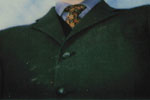

2002: Manhattan, NY - 2003: Lake Tahoe, CA - 2004: San Francisco, CA - 2005: Palo Alto, CA




2006: Tallahassee, FL - 2007: Palo Alto, CA - 2008: Chiang Mai, TH - 2009: Pittsburg, PA


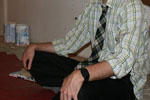

2010: Newport Beach, CA - 2011: Long Beach, CA - 2012: Emeryville, CA - 2013: Toronto, ON




2014: Providence, RI - 2015: Lyme, CT - 2016: San Francisco, CA - 2017: New Haven, CT
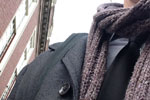



UNTITLED (Minuet in MG)
1999—
MG Midget (1974), steel, paper, plastic, concrete
15 in. x 26 in. x 65 ft.
The seven-story tall sculpture, Untitled (Minuet in MG),
contains a 1974 MG Midget sportscar that was donated,
shredded, steamrolled, photographed, bagged, labeled,
numbered, and filed by weight from heaviest to lightest
in milligrams (mgs)—an MG in mgs.
The sculpture now holds the Guinness World Record for the
"tallest file cabinet on earth," and the DMV registration
for the shredded car filed inside the cabinet officially
indicates possession by its owner.
Collection of Rene & Veronica di Rosa Foundation, Napa, CA
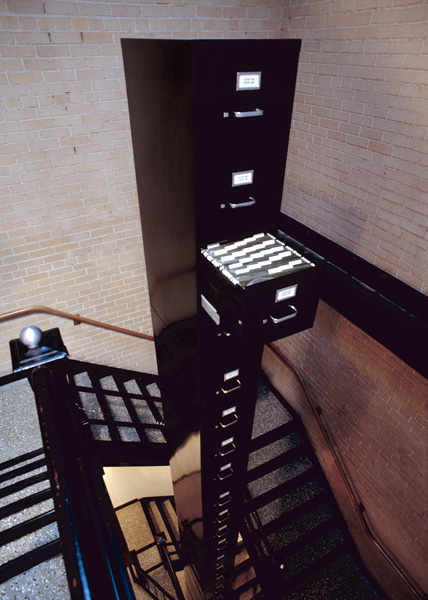
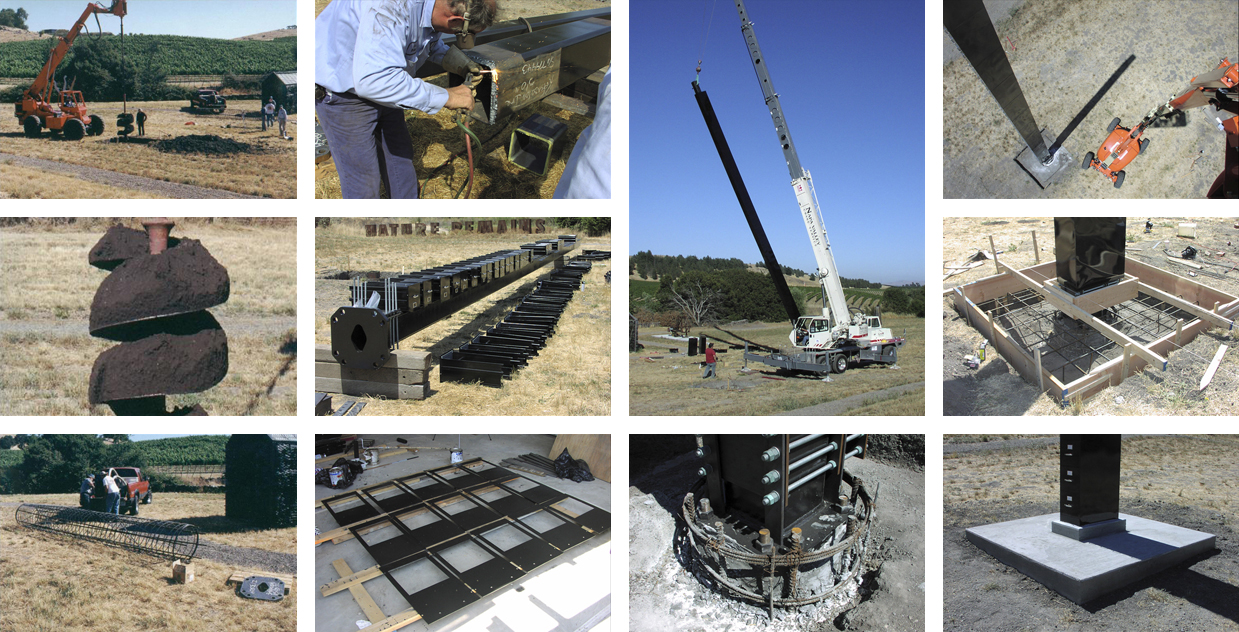

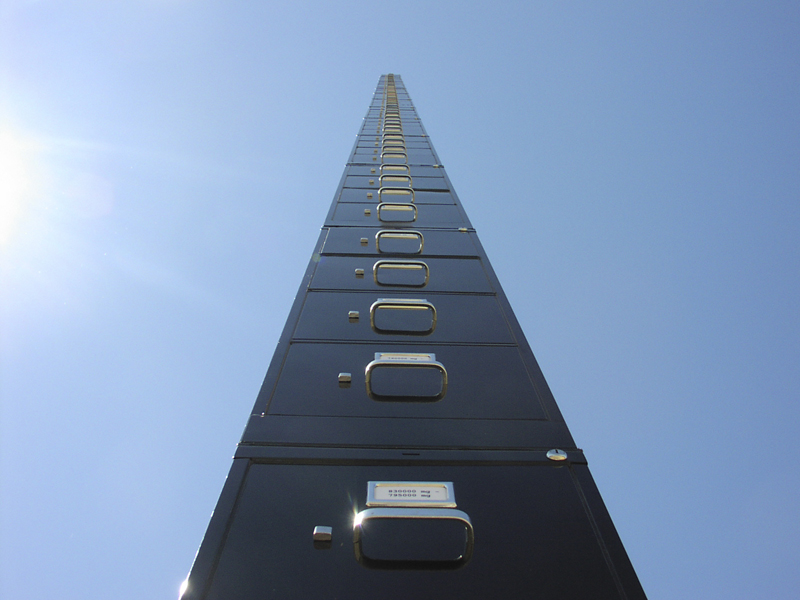
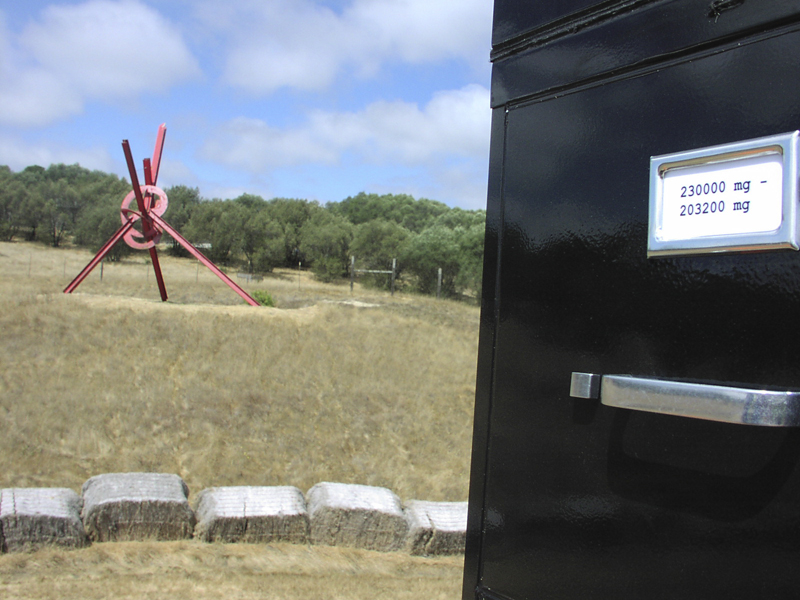

ROW B, PLOT 33
1999—
Dirt, concrete, undeclared object
36 in. x 96 in. x 108 in.
The sculpture, Row B, Plot 33, is composed of 6 tons of dirt removed from a cemetery plot that was purchased in Shasta, California and transported to a gallery in San Francisco, California.
The dirt was tamped into 1 ft. square bricks and assembled on the gallery floor as a literal real estate transaction: the artist bought a plot of land and took it home.
In addition, the cemetery deed, officially registered with Siskiyou County, now indicates the owner of the land, which is also a sculpture.
Private Collection, San Francisco, CA
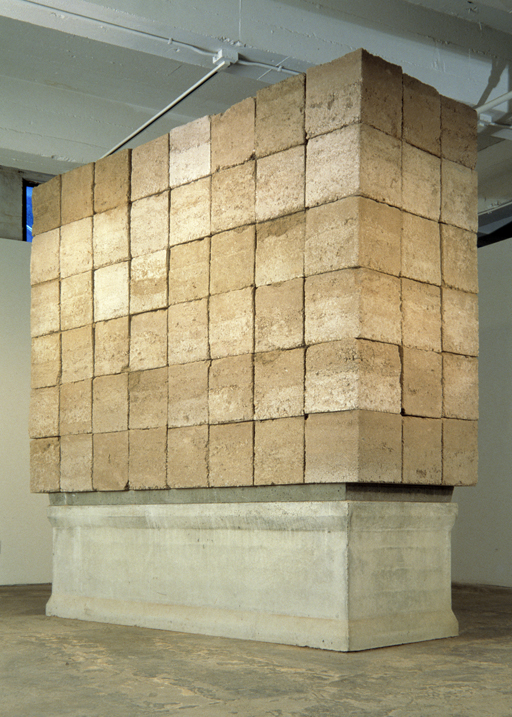
Cemetery plot where the dirt was removed:

BIG PICTURE FRAME
1999—
Steel, glass, vinyl, durst lambda
48 in. x 96 in. x 96 in.
The sculpture, Big Picture Frame, contains a full-scale bus shelter advertising an anonymous campaign for self-identity.
Described by one art critic as "waiting for Godot in cyberspace," the internet domain registration officially links the sculpture to its owner.
Collection of San Francisco Museum of Modern Art (SFMOMA),
San Francisco, CA

VERN
1999—
Cremated remains on canvas
1 3/4 in. x 21 in. x 47 in.
The painting, Vern, is composed of the cremated remains of an
unrecognized painter named Vernon Koski, who aspired to be
in a museum during his lifetime and now hangs in the permanent
collection of the San Francisco Museum of Modern Art
(SFMOMA).
Koski's lifelong dream came true when his wife answered a
classified advertisement to "Donate Your Ashes To Art; Let Your
Loved One Live On."
An independent documentary film has been made about
the life of Vernon Koski; it helps to expand the painting's
romantic turn-of-events by allowing Koski's artwork—seen in
the film—to reach a wider audience after his death.
In addition, every time the painting travels, even temporarily,
an application, permit, and affidavit must be filed with
the county to identify its current location. Thus, one additional
page is added to Koski's death certificate each time the painting
travels, leaving an official paper trail of current and previous
locations of the artwork.
[ Full Story ]
Collection of San Francisco Museum of Modern Art (SFMOMA),
San Francisco, CA

Newspaper advertisement:

Modified death certificate, new final resting place:
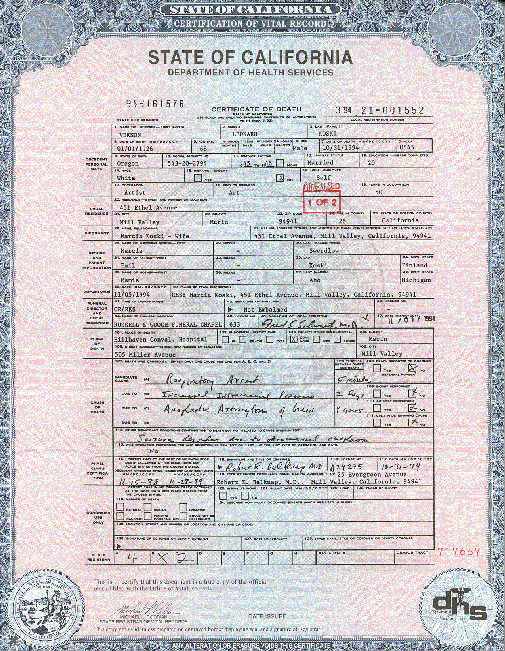

Permit to transport, modify death certificate:

THE COLOR OF PALO ALTO
2001—
Mixed media
26 sq. mi. x 365 days
Commissioned by the City of Palo Alto Public Art Commission
Early paint can mock-up, 2001-2003:
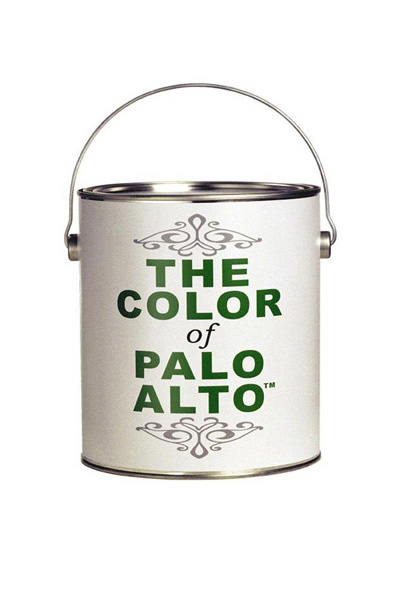
Early data sampling rig with mounted chromoscope (digital camera), GPS, digital compass, and
laser distance meter; early data visualizations using GIS maps, 2001-2003:

Early data visualizations using paint to create paintings, 2001-2002:

The First Photo-Assisted 9-1-1 Emergency Response System in the United States:
"The Color of Palo Alto" created the nation's first photo-assisted 9-1-1 emergency response system,
pioneering and popularizing citywide, street-level digital photography in Silicon Valley starting in 2001.
The 9-1-1 system was built in October 2003 and presented to a standing-room only crowd at the
California GIS Conference, San Jose, CA in February 2004, showing the possibility, affordability, and
usefulness of citywide, street-level digital photography for City Planning, Public Works, Disaster
Assessment, Emergency Response, Real Estate, etc. Afterward, Yates was contacted by researchers
around the globe, ranging from tech companies in Silicon Valley to the national rail service of Italy
wanting to document their entire rail system.
The process was quite simple. After "The Color of Palo Alto" was complete, the City of Palo Alto would
have a photograph of every parcel in the city. Meanwhile, they already had a 9-1-1 system based upon
their parcel map in the GIS. When a call came through, the parcel of the caller was highlighted in the GIS
and 9-1-1 operators could thereby understand the neighborhood context of the call based upon this
overhead map of city parcels; they could also click on the parcel to see a list of attributes, such as number
of rooms, number of floors, square footage, etc. On the left-hand tool-bar in the GIS interface there was
space to place a thumbnail photograph of the parcel, which had never been done before, that when clicked
could be enlarged, and that enlarged photo could then be reduced or dismissed. If there were two
photographs, or more, such as when a parcel was on a corner and had two photographs, or when a parcel
occupied an entire block and had four photographs, there was still space for these additional photos in the
toolbar. The city implemented the image field in the toolbar in October 2003 and Yates took sample
photographs to populate several parcels and prove that it worked. From that point forward, the artist's
photographs were part of a working 9-1-1 system. A first-in-the-nation system.
Chronology of Citywide Street-Level Photography in Silicon Valley:
2001 - The Color of Palo Alto
- 2001 Public proposal to City of Palo Alto, televised.
- 2002 Fundraising; public presentations; televised.
Building permit process for Civic Center Plaza begins.
- 2003 Image field (space designated for photographs in a user interface) for Yates integrated
into existing City of Palo Alto 9-1-1 emergency response system and populated with real
sample images that worked and remained in the system thereafter; exhibition; press;
televised.
Building permit process for Civic Center Plaza continues.
- 2004 Demonstration of 9-1-1 and GIS system to California GIS Conference, San Jose, CA;
"Best Art Project in Bay Area" by San Francisco Magazine, other press, etc.; televised.
Building permits granted for portable solar garage in Civic Center Plaza.
Public installation with explanatory display located in Civic Center Plaza at 250 Hamilton
Avenue, Palo Alto;
First meeting with VP at soon-to-be-launched Google Maps in 2004 explaining learnings and
usefulness of the citywide photographs from "The Color of Palo Alto" to the GIS and 9-1-1
system (second meeting after Google Maps launch in 2005).
- For years, it was common knowledge in Palo Alto that an artist was going around the city
taking photographs of every property with a digital camera, for very little money, and had
discovered how useful such photographs could be when tied into the City's GIS; this drew
interest from local tech companies, justifying their own investment in and experiments with
such systems.
2005 - Amazon A9 Block View
- Amazon A9, a skunkworks for Amazon, was headquartered at 450 Hamilton Avenue, Palo
Alto (two blocks away from "The Color of Palo Alto" located at 250 Hamilton Avenue, Palo
Alto). Amazon A9 staff stopped by "The Color of Palo Alto" explanatory display, located
in front of City Hall in Civic Center Plaza, and spoke to Yates during the previous year 2004
on their way to lunch at Whole Foods a few blocks away. They launched Amazon A9 Block
View the following year 2005.
2006 - Microsoft Streetside
2007 - Google Street View
Photo-assisted 9-1-1 system built in October 2003 and presented to the California GIS Conference, San Jose, CA in February 2004:
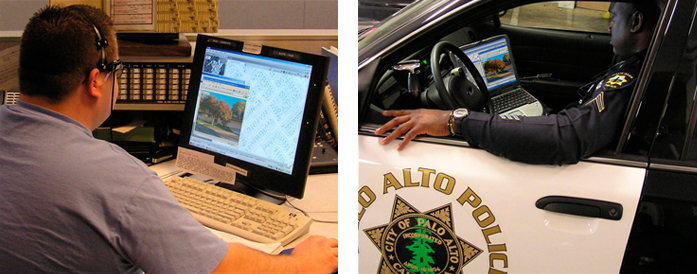
3D model of portable solar garage:

Built and installed, the portable solar garage charged the electric scooter and equipment inside with renewable energy; used as a laboratory, the structure referenced Palo Alto's history of garage inventors: namely, the original Hewlett-Packard detached one-car garage--an official landmark known as "The Birthplace of Silicon Valley"--a few blocks away on Addison Avenue.
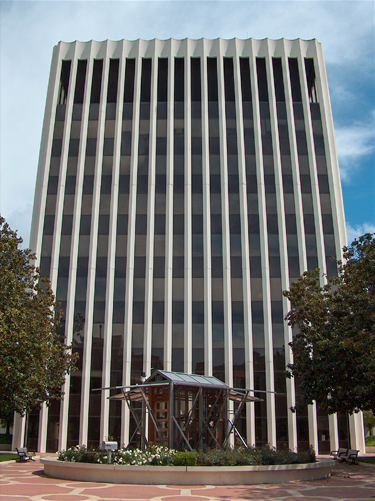
Electric scooter and mounted chromoscope (digital camera), GPS, digital compass, and laser distance meter used for data sampling. Yates stayed true to Palo Alto hometown company Hewlett-Packard by using an HP digital camera to take the color samples and find the color of the city (photo by Jamie Kripke for Dwell Magazine):

The entire City of Palo Alto displayed A to Z, January to December, on the front of City Hall:

First window panel starts with Winter, January, and A Streets, includes 1st, 10th, and 35th streets, alphabetically:
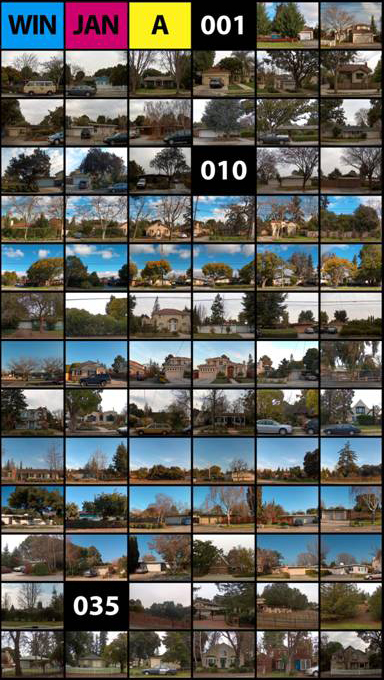
Detail of entire city:
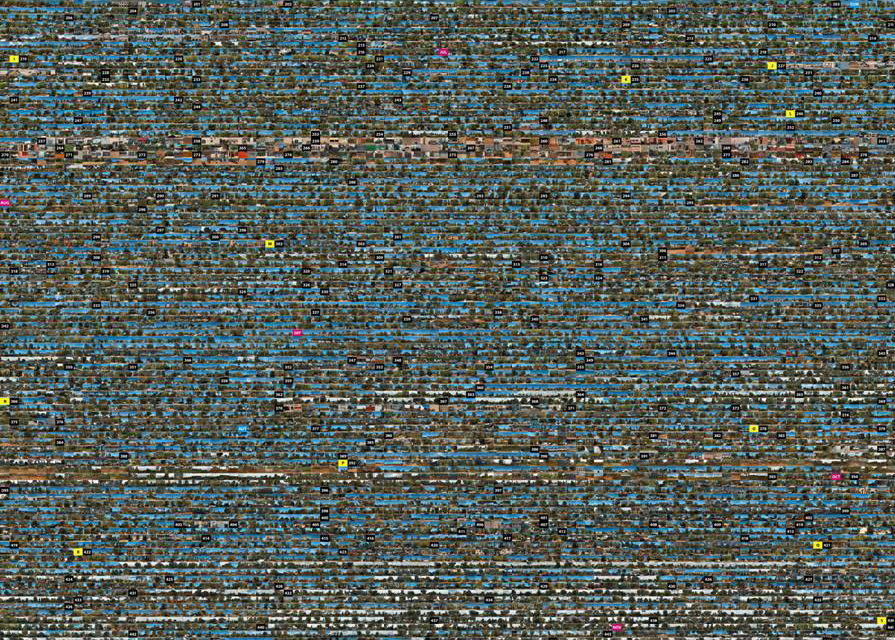
Installation on City Hall:

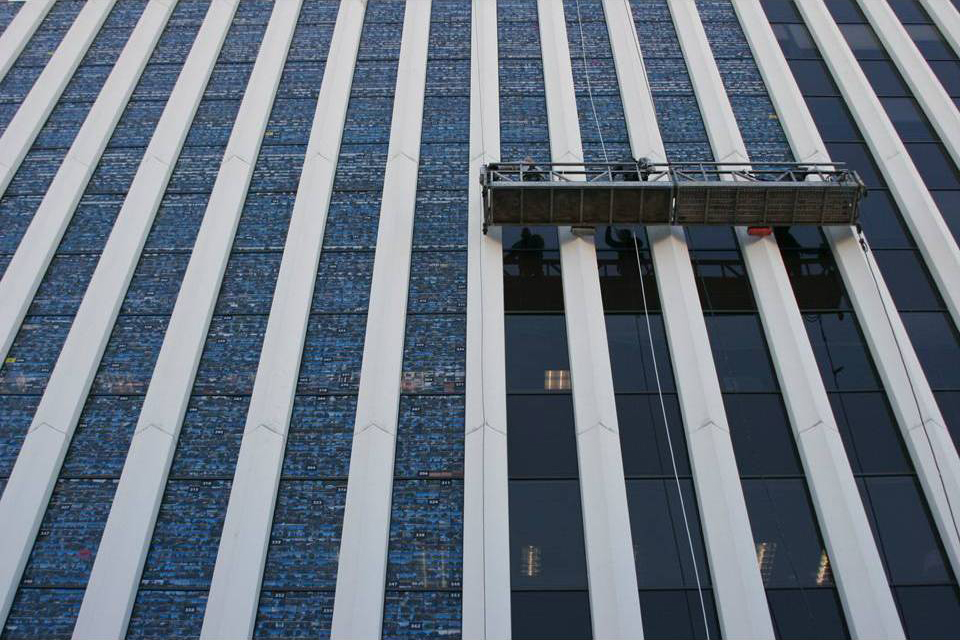


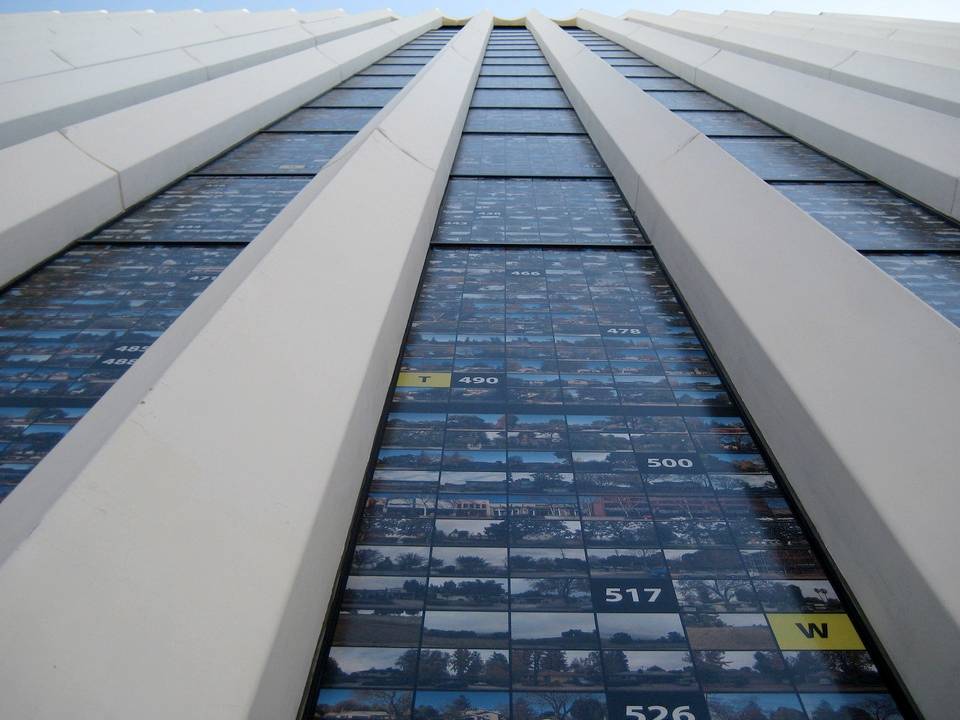
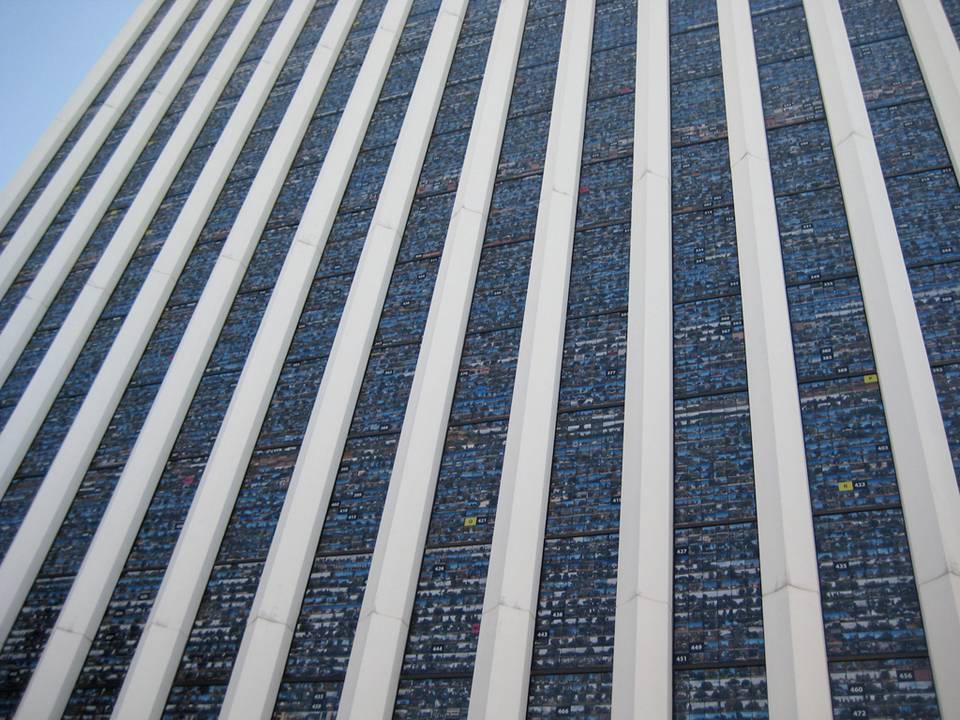

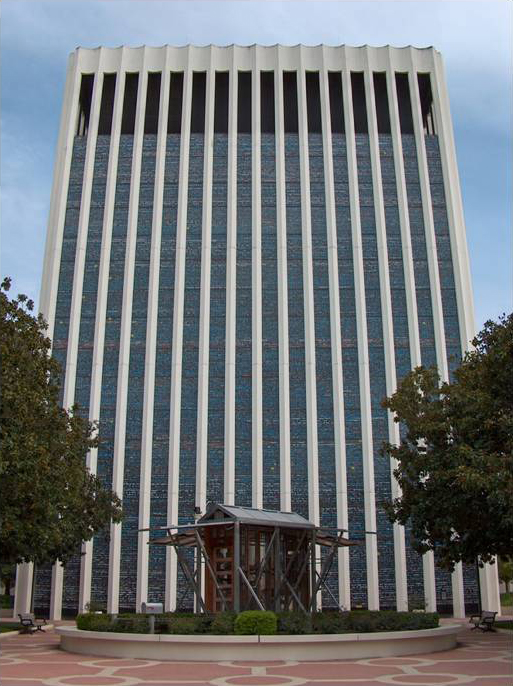
Proclamation from the City of Palo Alto declaring "The Color of Palo Alto" the official color of the city:

Bronze plaque approved by the City of Palo Alto Public Art Commission for placement in the Civic Center Plaza to commemorate the location where "The Color of Palo Alto" was discovered:

The final average colors of the entire City of Palo Alto in HSV:
The first average refers to the aggregate of the parcels and the second average refers to
the parcels themselves. For example, for a street with ten parcels we can find the mean average
color of each parcel, so we then have ten different mean average colors, one for each parcel.
Then, if we find the mean average of those ten mean averages (to find the average color of that
street), we have the Mean average of Mean averages, or "Mean of Means", or "MeMe", or "meme",
for short:
"Mean of Means" or "meme" = Mean average color of the mean average colors of each parcel.
"Mean of Modes" or "memo" = Mean average color of the mode average colors of each parcel.
"Mode of Means" or "mome" = Mode average color of the mean average colors of each parcel.
"Mode of Modes" or "momo" = Mode average color of the mode average colors of each parcel.
MODE OF MEANS
HSV 139,74,60
RGB 40,153,76
CMYK 74,0,51,40
MEAN OF MEANS
HSV 106,46,46
RGB 76,117,63
CMYK 35,0,46,54
MEAN OF MODES
HSV 108,52,37
RGB 55,94,45
CMYK 42,0,52,63
MODE OF MODES
HSV 201,100,100
RGB 0,166,255
CMYK 100,35,0,0

HSV was invented in Palo Alto at XeroxPARC: it is the hometown color space:

Sample average colors of seasons:

Sample average colors of dates:

Sample average colors of months (shows cloudy Winter skies (white), clear Summer skies (blue), in Mode of Modes):
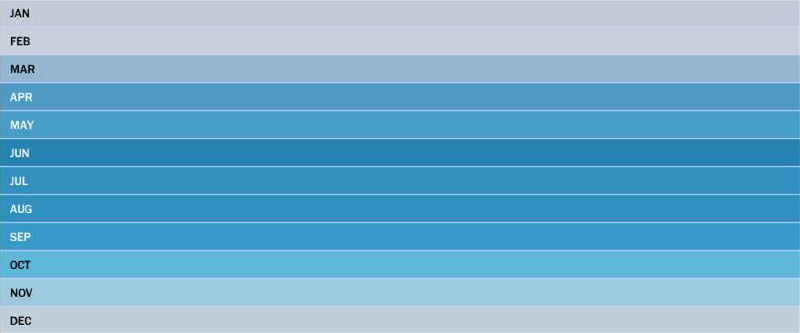
Sample average colors of neighborhoods:
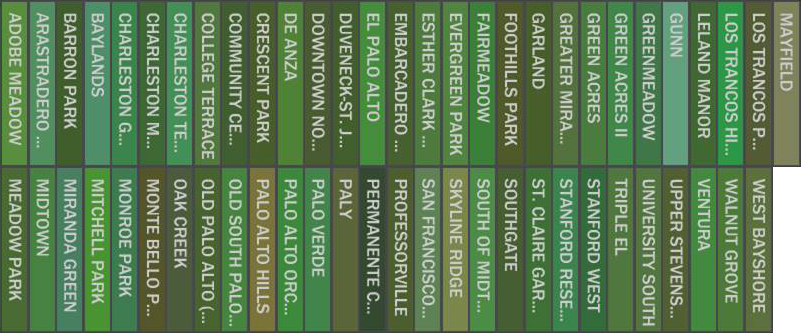
Sample average colors of streets that begin with the letter "H":

Sample average colors of parcels:

Sample plaid based on four average City colors in HSV:

GPS path around Palo Alto, January to December:


Contract with the City of Palo Alto (page 1):

Contract with the City of Palo Alto (page 2):

Contract with the City of Palo Alto (page 3):
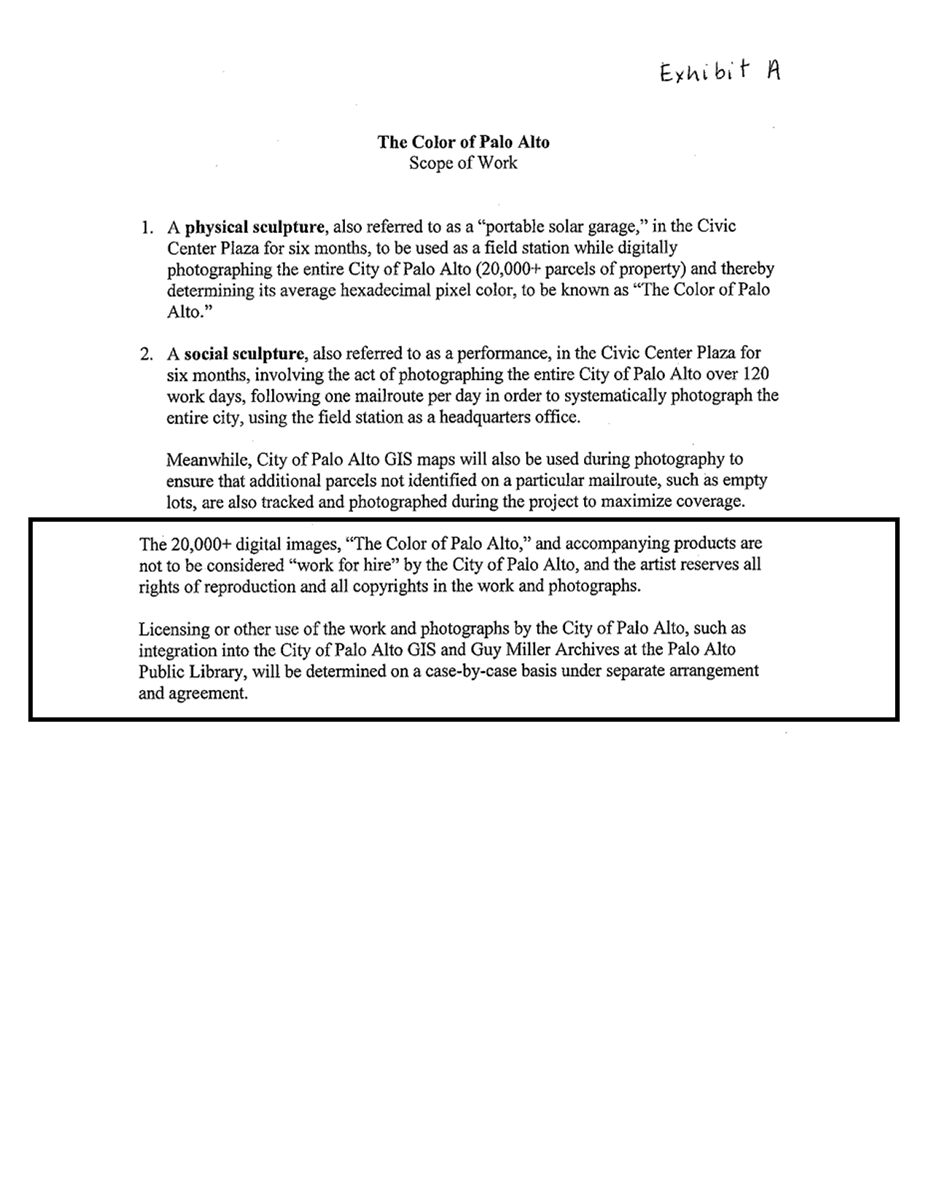
"The Color of Palo Alto" Paint Cans - Mode of Means, Mean of Means, Mean of Modes, 2008.
Anything painted by anyone with these colors is a "painting":

"Best Art Project in the Bay Area"
-San Francisco Magazine
"Nice Modernist" (Humanitarian Award)
-Dwell Magazine
"The Great Palo Alto Art Experiment"
-San Jose Mercury News
"Predated Google Street View by six years"
-New York Times
Copyright 1996- Samuel Yates. "The Color of Palo Alto" is a trademark of Samuel Yates. The information contained herein is subject to change without notice. The artist shall not be liable for technical or editorial errors or omissions contained herein.